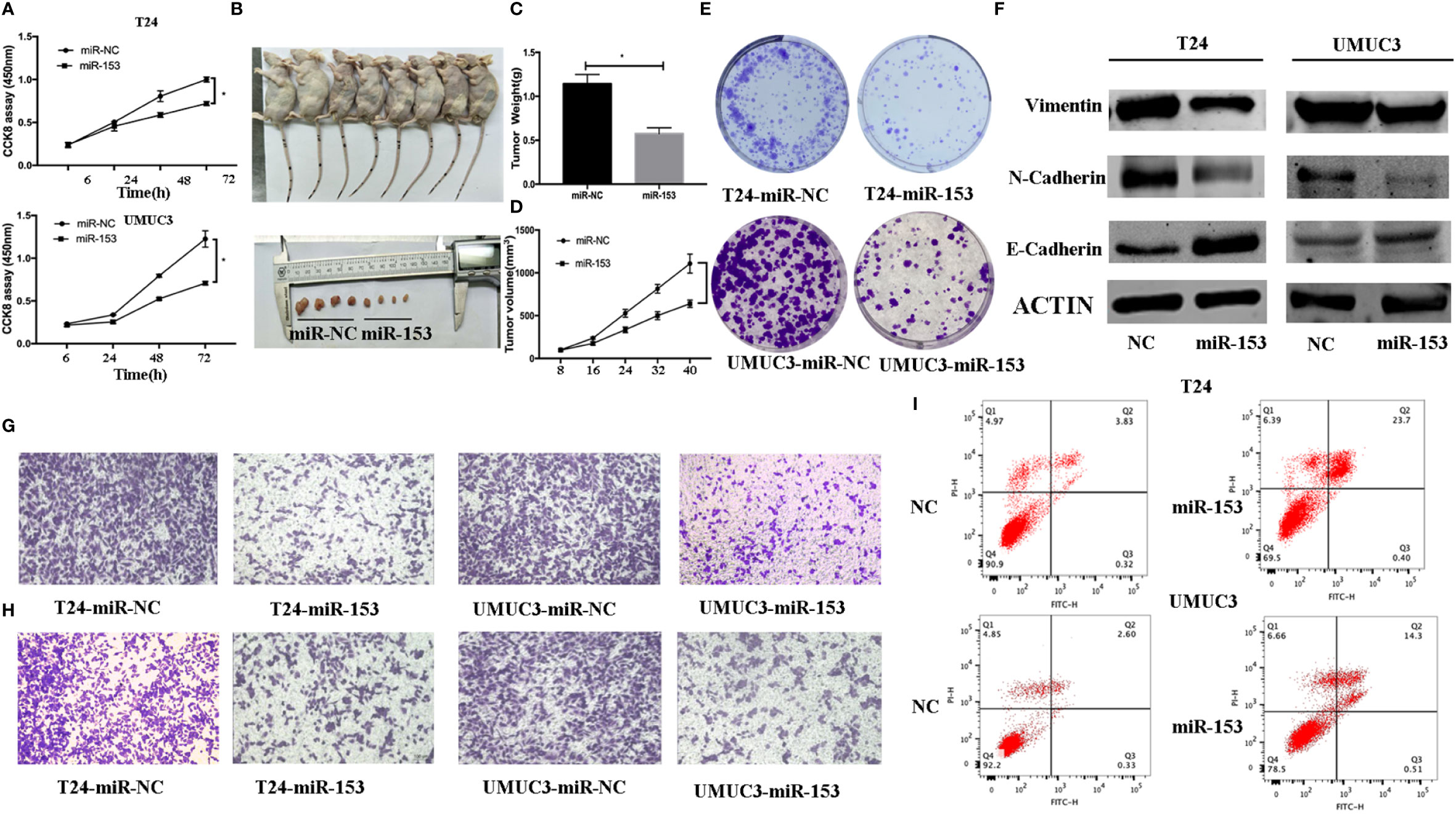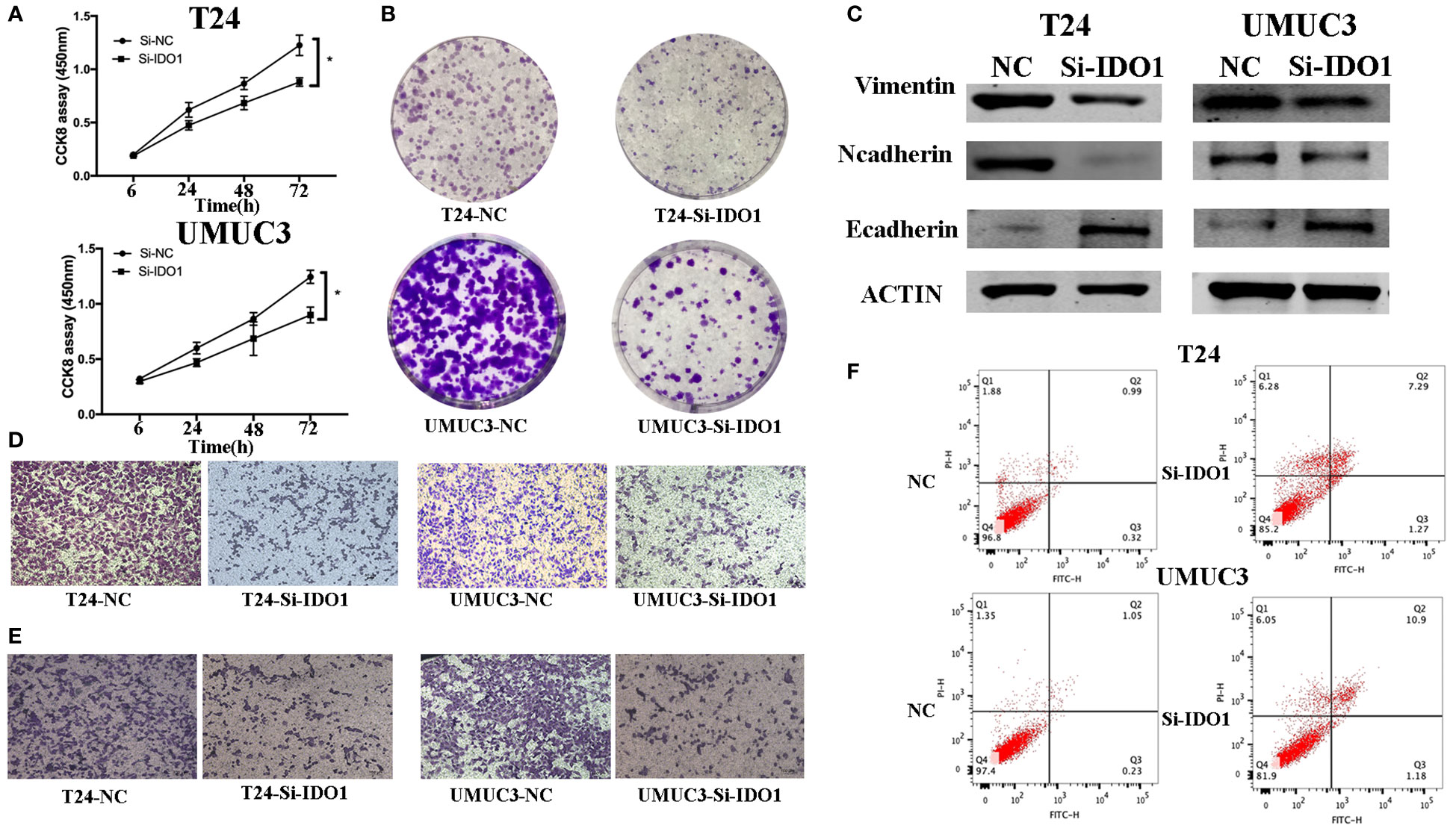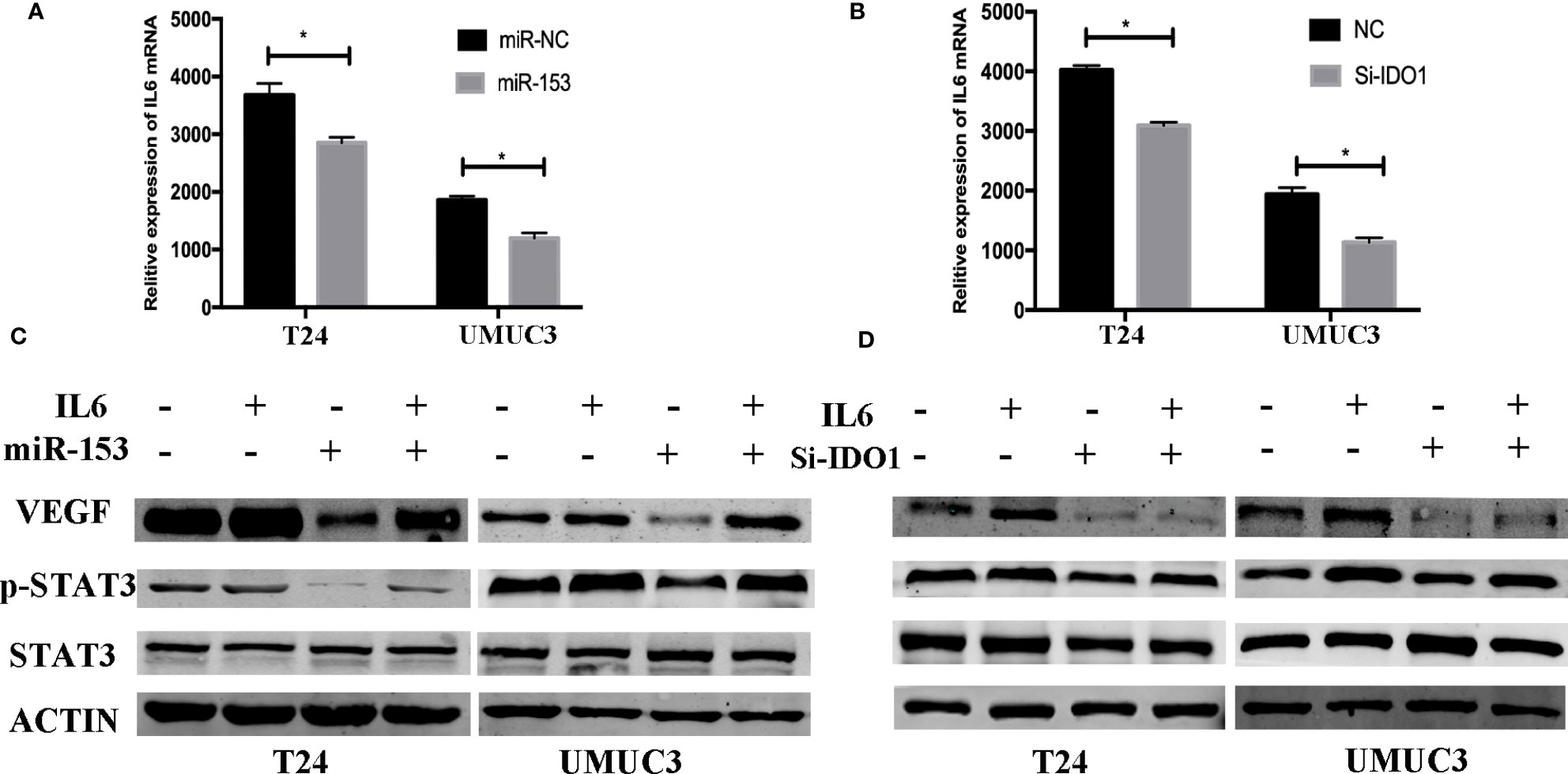
94% of researchers rate our articles as excellent or good
Learn more about the work of our research integrity team to safeguard the quality of each article we publish.
Find out more
CORRECTION article
Front. Oncol. , 22 May 2023
Sec. Molecular and Cellular Oncology
Volume 13 - 2023 | https://doi.org/10.3389/fonc.2023.1208728
This article is a correction to:
MicroRNA-153 Decreases Tryptophan Catabolism and Inhibits Angiogenesis in Bladder Cancer by Targeting Indoleamine 2,3-Dioxygenase 1
 Wentao Zhang1,2†
Wentao Zhang1,2† Shiyu Mao1†
Shiyu Mao1† Donghui Shi3†
Donghui Shi3† Junfeng Zhang1*
Junfeng Zhang1* Ziwei Zhang1
Ziwei Zhang1 Yadong Guo1
Yadong Guo1 Yuan Wu1,2
Yuan Wu1,2 Ruiliang Wang1
Ruiliang Wang1 Longsheng Wang1
Longsheng Wang1 Yong Huang4*
Yong Huang4* Xudong Yao1,2*
Xudong Yao1,2*A corrigendum on
MicroRNA-153 decreases tryptophan catabolism and inhibits angiogenesis in bladder cancer by targeting indoleamine 2,3-dioxygenase 1
by Zhang W, Mao S, Shi D, Zhang J, Zhang Z, Guo Y, Wu Y, Wang R, Wang L, Huang Y and Yao X(2019). Front. Oncol. 9:619. doi: .10.3389/fonc.2019.00619
In the published article, there was a there was an error in Figures 2, 5 as published. We mistakenly used the same image of clone formation in Figure 2E (T24-miR-153) and Figure 5B (UMUC3-Si-IDO1) due to layer overlays. Furthermore, in the transwell section of Figure 2, we found a minor error in the UMUC3-miR-153(G) and T24-miR-NC(H) due to incorrect use of images. We repeated these experiments and corrected the results. The corrected Figures 2, 5 appear below.

Figure 2 miR-153 inhibits bladder cancer growth in vitro and in vivo by promoting tumor cell apoptosis, migration, invasion, and EMT. (A) Cell viability CCK-8 assay. T24 and UMUC3 cells were transfected with miR-153 mimics or negative control and then subjected to the CCK-8 assay. (B) Nude mouse xenograft assay. Stably miR-153 expressing mimics or negative control bladder cancer cells were subcutaneously injected into nude mice and monitored for 40 days for tumor cell xenograft formation and growth. (C) Tumor cell xenograft growth curves. (D) Tumor cell xenograft weight. (E) Colony formation assay. T24 and UMUC3 cells were transfected with miR-153 mimics or negative control and then subjected to tumor cell colony formation assay (x 200). (F) Western blot. Expression levels of EMT-associated markers in miR-153 mimics or negative control transfected T24 and UMUC3 cells were evaluated by using Western blot analysis. (G) Transwell tumor cell migration assay. (H) Transwell tumor cell invasion assay. (I) Flow cytometric Annexin V-PI double staining assay. *P < 0.05.

Figure 5 IDO1 knockdown inhibits bladder cancer cell proliferation, migration, and invasion, and induced apoptosis and modulation of EMT markers. (A) Cell viability CCK-8assay. T24 and UMUC3 cells were transfected with IDO1 or negative control siRNA and then subjected to the CCK-8 assay. (B) Colony formation assay. T24 and UMUC3 cells were transfected with IDO1 or negative control siRNA and then subjected to colony formation (x 200) and Transwell assays. (C) Western blot. Levels of the EMT-associated markers were analyzed in T24 and UMUC3 cells after IDO1 knockdown by using Western blot. (D) Transwell migration assay. (E) Transwell invasion assay. (F) Flow cytometric Annexin V-PI double staining assay in T24 and UMUC3 cells after knockdown of IDO1. *P < 0.05.
There was also an error in Figure 7. We missed labeling the names of T24 and UMUC3 cell lines in panels C and D. The corrected Figure 7 appears below.

Figure 7 miR-153 targets IDO1 and modulates angiogenesis through IL6/STAT3/VEGF signaling. (A, B) ELISA. IL_6 expression in T24 and UMUC3 cells (overexpression of miR-153 or knockdown of IDO1 and their respective negative controls) were analyzed using ELISA. (C, D) Western blot. T24 and UMUC3 cells (overexpression of miR-153 or knockdown of IDO1 and their respective negative controls) were pretreated with 100 ng/ml of IL-6 for 48 h and then subjected to Western blot analysis of STAT3, p-STAT3, and VEGF. *p<0.05.
The authors apologize for this error and state that this does not change the scientific conclusions of the article in any way. The original article has been updated.
All claims expressed in this article are solely those of the authors and do not necessarily represent those of their affiliated organizations, or those of the publisher, the editors and the reviewers. Any product that may be evaluated in this article, or claim that may be made by its manufacturer, is not guaranteed or endorsed by the publisher.
Keywords: bladder cancer, miR-153, tryptophan catabolism, angiogenesis, indoleamine 2, 3-dioxygenase 1
Citation: Zhang W, Mao S, Shi D, Zhang J, Zhang Z, Guo Y, Wu Y, Wang R, Wang L, Huang Y and Yao X (2023) Corrigendum: MicroRNA-153 decreases tryptophan catabolism and inhibits angiogenesis in bladder cancer by targeting indoleamine 2,3-dioxygenase 1. Front. Oncol. 13:1208728. doi: 10.3389/fonc.2023.1208728
Received: 19 April 2023; Accepted: 02 May 2023;
Published: 22 May 2023.
Edited and Reviewed by:
Lawrence Wing Chi Chan, Hong Kong Polytechnic University, Hong Kong SAR, ChinaCopyright © 2023 Zhang, Mao, Shi, Zhang, Zhang, Guo, Wu, Wang, Wang, Huang and Yao. This is an open-access article distributed under the terms of the Creative Commons Attribution License (CC BY). The use, distribution or reproduction in other forums is permitted, provided the original author(s) and the copyright owner(s) are credited and that the original publication in this journal is cited, in accordance with accepted academic practice. No use, distribution or reproduction is permitted which does not comply with these terms.
*Correspondence: Junfeng Zhang, MTYxMDY1NUB0b25namkuZWR1LmNu; Yong Huang, aHVhbmd5b25nbWVkaWNhbEBvdXRsb29rLmNvbQ==; Xudong Yao, eWFveHVkb25nMTk2N0AxNjMuY29t
†These authors have contributed equally to this work
Disclaimer: All claims expressed in this article are solely those of the authors and do not necessarily represent those of their affiliated organizations, or those of the publisher, the editors and the reviewers. Any product that may be evaluated in this article or claim that may be made by its manufacturer is not guaranteed or endorsed by the publisher.
Research integrity at Frontiers

Learn more about the work of our research integrity team to safeguard the quality of each article we publish.